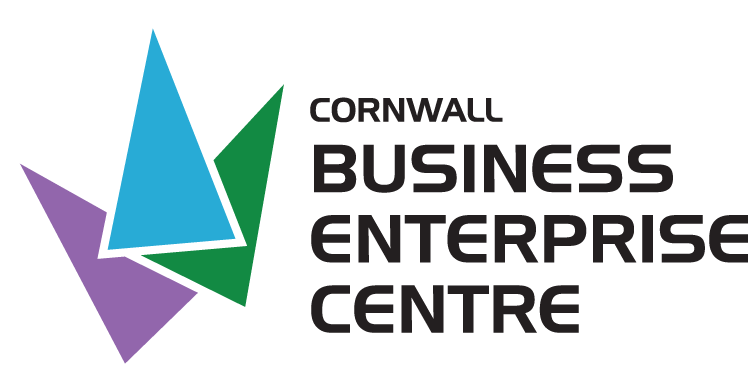Marketing Plan
A company’s marketing plan outlines its intended marketing and advertising activities for a specific period of time (usually the next 12 months). These activities are tightly linked to the company’s strategic plan, which offers a three- to five-year view.
A well-constructed marketing plan increases a company’s chances of success by setting clear goals, actions and accountabilities. It will typically include:
- A summary of opportunities and threats to be addressed that emerge from the company’s SWOT analysis
- Financial and non-financial objectives, both overall and by market segment or geographic region
- Competitive success factors
- Specific tactics for products, pricing, marketing and communications
- Specific tactics for dealing with competitors
- Timing for all of the tactics identified
- Clear assignments of responsibility for each part of the plan, along with monitoring and reporting requirements
- Budget and notes on cost controls
Some marketing plans also link directly to a company’s sales plan, depending on how the company is organized.
A marketing plan is like a GPS for your business: it shows you the best way to reach your sales and revenue goals while avoiding any time-consuming and costly errors along the way. BDC Senior Business Advisor Mallika Kazim provides some tips for developing a marketing plan that will help map out your route and keep your business on course.
What is a marketing plan?
A marketing plan outlines your intended marketing/advertising activities for a specific period, usually over the next 12 months. It describes how you’ll reach, attract and persuade customers to buy your products or services, with clear goals, actions and accountabilities.
While large corporations might have an overarching marketing strategy with individual plans for each part of the strategy, Kazim recommends entrepreneurs with smaller businesses keep things simple.
“Think in practical terms,” she says. “It’s not about capital-S ‘Strategy’, it’s a how-to for achieving your targets”.
The marketing plan is your attack plan for chasing after your high-priority revenue opportunities.
Mallika Kazim
BDC Senior Business Advisor
What is the purpose of a marketing plan?
Most businesses will have many different plans that interlink and support each other.
Your marketing plan identifies the promotional tactics that will help you accomplish the goals of your business plan, which sets out your target markets and the solutions you’ll offer to them. It should also connect with your strategic plan, which sets the overall direction for your business for the next three to five years.
“If you’ve done your business plan, you know who you want to sell to and why,” says Kazim. “The marketing plan is your attack plan for chasing after your high-priority revenue opportunities.”
A well-built marketing plan also builds confidence with financial institutions, showing lenders your business has a good chance of being successful.
How to build a marketing plan in 5 steps
Creating a marketing plan typically involves the following steps:
1. Conduct a SWOT analysis
Look at your own strengths, weaknesses, opportunities and threats:
- Strengths are factors that improve your position in the marketplace. These can include skills, capabilities and proficiencies that can’t easily be copied by your competitors, such as low production costs due to superior technology.
- Weaknesses are factors that reduce your ability to achieve your objectives, such as unreliable delivery or outdated production tools.
- Opportunities are ways your business can grow and become more profitable. These might include entering new markets or adopting new technologies.
- Threats are factors that could have a negative impact on your business in your primary markets, such as labour shortages or detrimental economic/political developments.
Because your strengths and weaknesses are defined in relation to your competitive environment, as part of this step, you’ll also want to conduct a competitive analysis to gain a complete picture of where you stand in the marketplace.
2. Profile your customers
Organize your current customers into three or four main groups—perhaps by industry or transaction size. Then drill down into what defines the customers in those groups: who they are, what they want, how much they buy, the information they use to make purchasing decisions and so on.
This is your opportunity to demonstrate that you know your customers inside and out. Paint a robust picture of them, including characteristics such as age, gender, profession, income level, education and geographic location. It’s also important to understand what motivates them to buy. Ask yourself why they would choose your products—and what might keep them away from your competitors.
“This is often the ‘a-ha’ moment,” says Kazim. “Many entrepreneurs think all their customers are the same, but that’s not true. By refining your customer segments in this way, it makes it possible prioritize and apply your marketing dollars much more effectively.”
3. Set clear objectives
What do you want to achieve with your marketing plan? Make sure those goals are attainable and realistic. For smaller entrepreneurs, business and marketing objectives are often one and the same. That means you can use the sales targets from your business plan for this step, such as those related to:
- Market share
- Total number of customers and customer retention rate
- Average purchase size
Not all your objectives have to be financial. Kazim tells her clients to set other kinds of targets, too, such as for digital engagement. Can you quantify your interactions on social media in terms of followers, shares, retweets, comments and likes? Your website also offers important metrics, so you should use tools such as Google Analytics that allow you to track visitor numbers and conversion rates over time. These may not directly affect your bottom line, but they are important indicators on the health of your brand.
4. Address the “four Ps” of marketing
Once you know your goals and who you want to reach, it’s time to make some strategic choices about how you’ll do that. For each of your customer segments, Kazim suggests going through the “four Ps” of marketing to determine the best ways to meet their needs:
- Product: What product or service will best meet their needs? Will you need to tweak your existing offering to better stand out in the marketplace?
- Pricing: How much will you charge? Could you make changes to your pricing to increase your competitive advantage? Pricing is typically based on how much something costs to make, market, distribute and sell, and also on the profit margin you want to achieve.
- Place: Where do customers search for, choose, buy and use your product or service? Are your offerings available where customers are most likely to find them? Be sure to consider both physical and online places.
- Promotion: How will you communicate and sell to your customers? This is what most people think of when it comes to “marketing” and can include advertising, in-person sales, public relations, social media marketing, email marketing and other promotional tactics.
“If you’ve built good profiles and know what makes your customers tick, it should be instinctive to figure out how best to reach them,” says Kazim. “For example, if you’re selling something very visual, like handmade jewellery, and your target market is female, Pinterest and Instagram are where you will want put the bulk of your effort.”
Be sure to include timing for all the tactics you’ve identified and assign someone within your business to be responsible for seeing them through.
If you’ve built good profiles and know what makes your customers tick, it should be instinctive to figure out how best to reach them.
5. Create a budget
How much will it cost to execute each of the tactics you’ve identified? Consider everything that might be involved—from copywriting and graphic design to the customer relationship management (CRM) tools you’ll need to adopt.
Creating a budget is often the most challenging part of marketing planning for many entrepreneurs, says Kazim, especially if they haven’t done it before. Her advice, again, is to keep it simple.
As a general rule, she says a minimum marketing spend of 1% of topline revenue is typical across most industries.
“It’s not a full-blown financial plan,” Kazim explains. “All you really need is a budget. You’ve mapped out your goals. Now figure out the costs associated with achieving them.”
She also reminds entrepreneurs to get buy-in from the bookkeeper or chief financial officer—whoever handles the money for the business—as they’re the ones who will sign off on the proposed budget.
Digital Marketing
Digital marketing is a rapidly changing environment where building long‑term strategies is not effective for small and medium‑sized businesses.
Instead, you need to use small, manageable strategies that allow you to quickly adjust to changing conditions by launching marketing campaigns quickly, learning what works and optimizing for better results.
If implemented correctly, this cycle of learning and optimizing is how small and medium‑sized businesses can maximize their return on their digital marketing investments.
Learn from successes and failures
One of the least used but most valuable aspects of digital marketing is measurement and analysis. It allows businesses to learn from failures and successes and increase their return on investment (ROI).
I’ve spent over a decade creating marketing strategies for large companies and most cannot measure the true ROI of their marketing mostly because their technical environment is too complex.
However, small and medium‑sized businesses are a natural fit for this type of marketing approach because they have less complex technical environments and more nimble management, allowing them to adjust and optimize quickly.
Four steps to success
There are four main stages involved in setting up a results-driven digital marketing framework.
- Build
- Drive
- Measure
- Optimize
The build stage can also be seen as the set‑up phase. This is where you develop a basic digital ecosystem (website, social media platforms, mobile and email database) for your businesses that will allow you to quickly launch, measure and optimize your digital marketing efforts.
At this stage, you are ensuring you choose the right technical platform (one that can be easily expanded) and ensuring elements like your brand, products and services are strongly presented. You also want to ensure that you can accurately measure the activity of visitors to your digital properties.
Attract potential customers
Once your digital ecosystem is set up, you will then need to figure out how to drive potential customers to your online properties. To get started you should launch a few simple campaigns, using such tools as Google AdWords or Facebook to learn how best to attract visitors and allocate your budget.
During the measurement stage, you are assessing the results of your campaigns to understand what tweaks should be made to your digital marketing properties and your digital marketing plan. It’s important to listen to what prospective customers are saying and analyze their behaviour on your online properties so you can figure out the best way to convert them into paying customers.
Ongoing cycle of improvement
The final stage is optimization as part of an ongoing cycle of measuring, learning and making changes to your digital ecosystem to help improve conversion of prospects into paying customers. This agile framework ensures that your content and the addition of more advanced technical features are based on true customer needs.
The result of your efforts will be continuous improvement and a maximum return on your digital marketing investments
Advertising
Follow these eight rules to get the most bang for your buck
By following a few basic rules, you can develop effective messages, choose the right advertising medium and get the most out of an advertising agency if you choose to use one.
Rule 1: Get your branding ready
Developing your organization’s brand is the first step in creating an effective advertising strategy. Your branding should position your company in the market and equip you to reach your audience with the right messages.
Rule 2: Create an advertising plan
Next, create an advertising plan as part of your larger marketing plan. It should include objectives and a budget.
What are you trying to accomplish with your advertising? Are you trying to introduce your company to the public? Promote a new product? Or announce a special promotion?
Next, identify the key benefit your business offers—the unique reason customers would want to buy from you and not you competitors.
Rule 3: Understand your audience
Every type of advertising has pros and cons. In deciding which one best suits your goals, first assess your audience.
- What age group do your customers typically fall into?
- Are they typically male or female?
- What are their concerns and personal habits?
- What kind of media do they consume?
Rule 4: Select the best advertising medium
The three main categories of advertising vehicles are:
- Online marketing, such as your website, social media properties and email campaigns. To learn more, download BDC’s free online marketing guide.
- Electronic media, including television and radio.
- Print media such as newspapers, newsletters, magazines, circulars and signs.
Rule 5: Go for a professional product
Remember, if your ads are amateurish, badly produced or appearing in the wrong places at the wrong time, your results will be diminished and your reputation potentially harmed. These pointers are valid for advertising in just about any medium.
- Keep it simple and concise.
- Prominently display your key messages and contact information.
- Avoid reverse type (white text on a dark background) as this is hard to read.
- Use only high-quality photography and visuals.
- Use customer testimonials to build credibility.
- Highlight the benefits of your products, rather than their features.
- Avoid criticizing your competitors.
- Have a compelling call to action—a message that asks customers to do something, typically make a purchase.
Rule 6: Get the most out of communication specialists
Advertising and marketing agencies offer a wide range of services from conception to production. If you’re planning online advertising, consult an agency that specializes in that area. A less expensive option is to hire a freelance copywriter or designer who can help you find the right concept and marry visuals with text.
Rule 7: Shop around for an agency
When you’re trying to choose a firm, you will want to shop around, gathering referrals, looking at past campaigns and getting proposals.
Once you’ve made your choice, make sure to check references and then sign a written contract, specifying deadlines and costs.
Rule 8: Cooperate with your agency
- Let the agency do its thing. Offer your ideas and feedback, but respect the expertise of the people you’ve hired.
- Talk directly to the creative team. Insist on direct, face-to-face (or at least telephone) contact with them.
- Simplify the approval process by allowing a limited number of people to deal with the agency and sign off on projects.
- Be generous with compliments. A sincere compliment goes a long way toward making agency people feel appreciated.
- Be prepared to pay a fair price if you want top-quality work.
Reference: BDC.ca


